KODAK 35mm delivers a vividly visceral result on Prime Video's satirical thriller 'Swarm' directed by Donald Glover
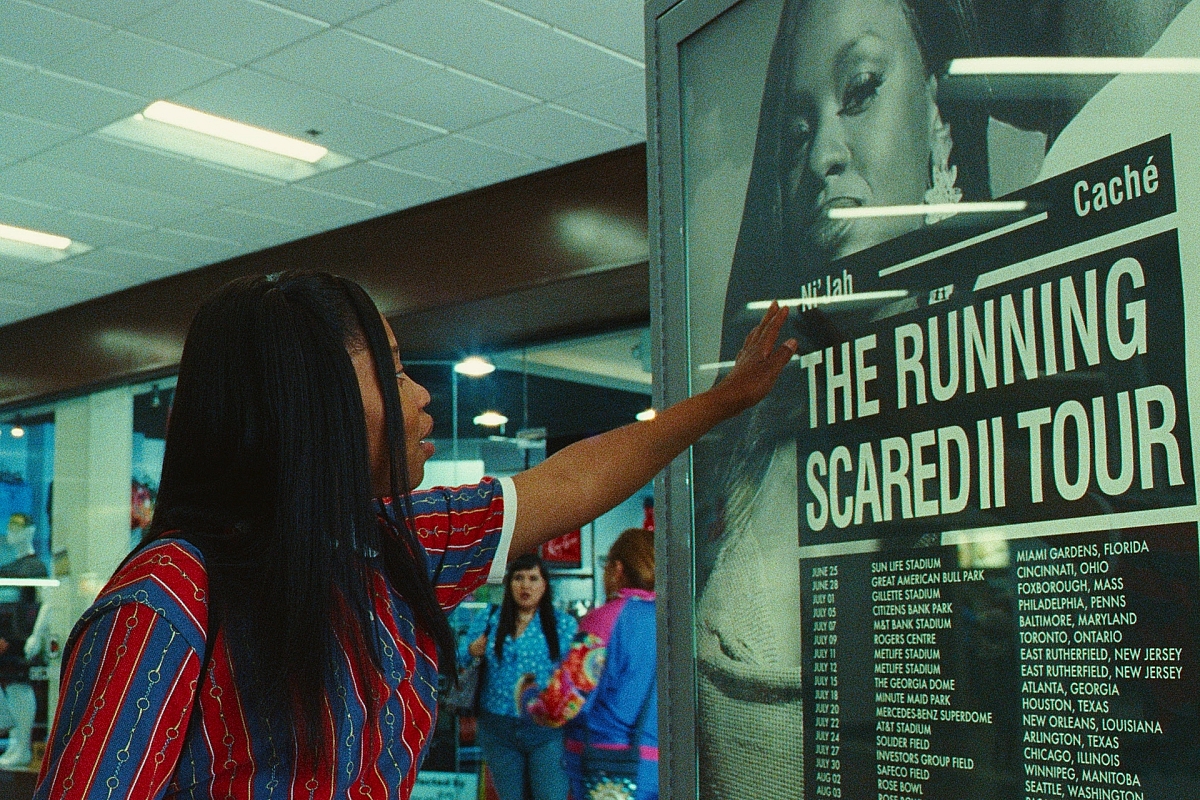
Dominique Fishback as Dre Greene in SWARM. Photo courtesy of Prime Video.
Captured on KODAK 35mm film, the Prime Video series, Swarm, presents a heartbreaking and compelling commentary about the power of social media over impressionable youngsters, as it depicts a gruesome account of an extreme situation.
Co-created by Janine Nabers and Donald Glover, the satirical thriller tells the story of Dre (Dominique Fishback), a young woman with an obsessive fixation about a pop star named Ni'Jah, whose feisty fanbase is known as 'The Swarm.' The story dives deep into Dre's life, as her idolatry of the musician grows to the point where she stalks and kills anyone who disrespects her favorite singer. It takes Dre on a murderous spree cross-country, using blunt and cumbersome objects as her weapons of choice, only to feel insatiably hungry after each gory dispatch of a wrongdoer.
While the narrative moves between Texas, Georgia, Tennessee, Seattle and LA, Swarm was filmed largely on location in and around Atlanta, Georgia. Production took place during the spring months of 2022, with most episodes being shot back-to-back, each taking around seven days to shoot.
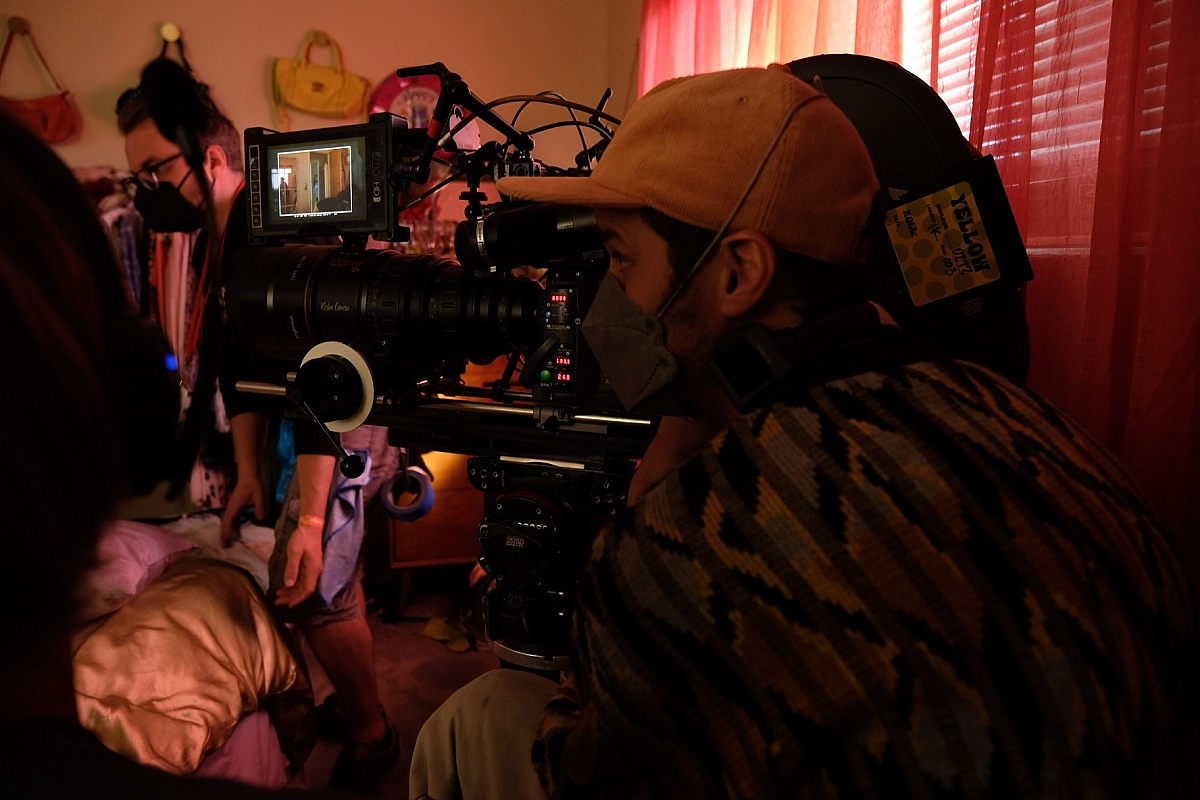
DP Drew Daniels operating the zoom lens. Photo courtesy of Drew Daniels.
Cinematography on the series came under the auspices of DP Drew Daniels, who filmed six of the show's seven episodes. Gabriel Patay shot the penultimate mockumentary-style episode. Swarm received positive reviews for Glover's direction, its soundtrack and the balance between its vivid visual aesthetic and challenging psychological drama, while Fishback's performance earned widespread acclaim, including a 2023 Primetime Emmy Award nomination for outstanding performance in a limited series. Additionally, the series has earned Emmy nominations for Janie Nabers and Donald Glover for Outstanding Writing for a Limited or Anthology Series or Movie, and Dominque Dawson for Outstanding Contemporary Costumes for a Limited or Anthology Series or Movie.
"I had never met Donald before, but he's a gifted artist and I'm a great fan of his work," recalls Daniels. "The script really sucked me in with regard to what it said about our obsession with social media, pop culture and celebrity fandom via a central character I hadn't ever seen before on film. I could visualize it in my head as I read it.
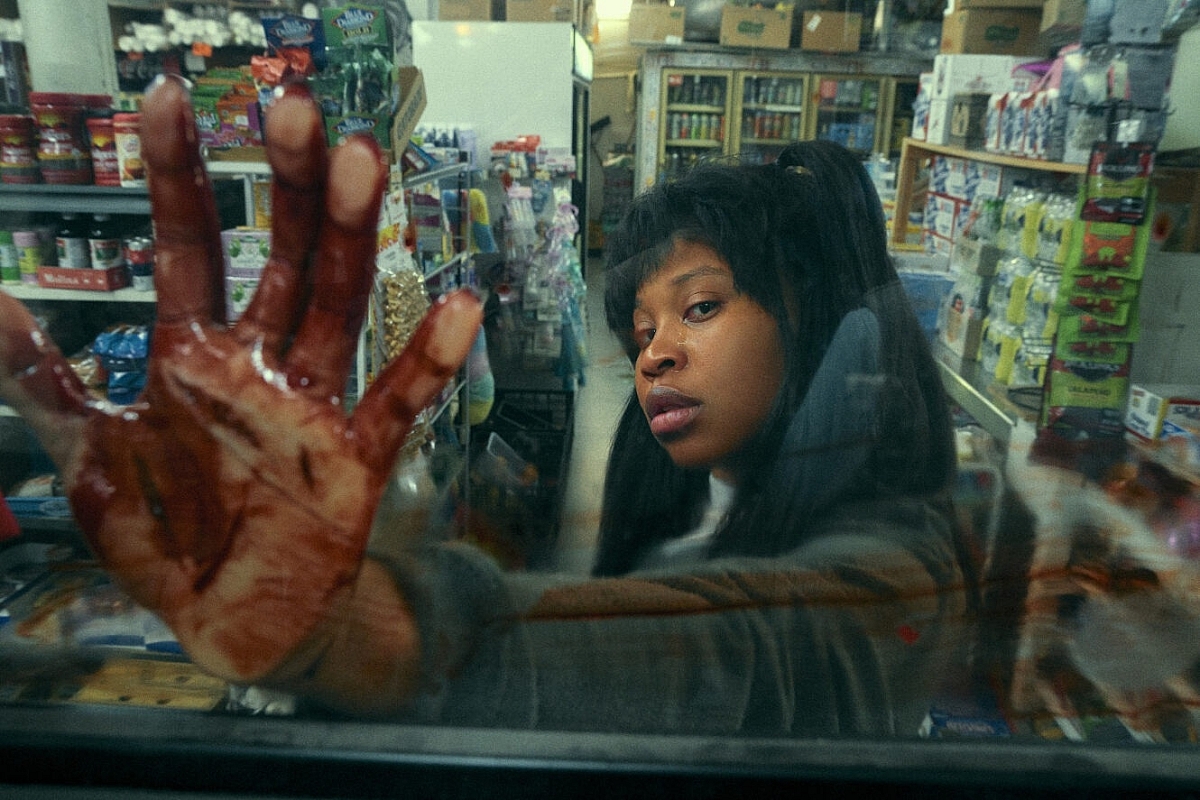
Dominique Fishback on the set of SWARM. Photo courtesy of Prime Video.
"During pre-production I didn't have extensive meetings with Donald about the aesthetic look-and-feel of the show, apart from his desire that the audience should not feel connected to, or be able to readily understand, Dre and the terrible things she does. The way he put it to me was that he wanted people's own humanity to betray them.
"In this respect we looked at Michael Haneke's psychodrama, The Piano Teacher (2001, DP Christian Berger), for its observational camerawork, where wide shots and single takes let the action play out. We also discussed Donald's preference not to depict the numerous murder scenes with gratuitous coverage that you see in a crime story like this. Other than that, he put his trust in me and pretty much left the visual side of things in my hands."
Daniels adds, "It was originally impressed upon me - that there was absolutely no way this was going to be shot on film. It was an all-digital affair." The DP says he is not a fan of large format digital cinematography, where the temptation is to shoot wide-open with very shallow depth-of-field. Daniels preferred to follow his instinct of showing Dre in the context of backgrounds, shooting with wider lenses at around T4.5 and T5.6.
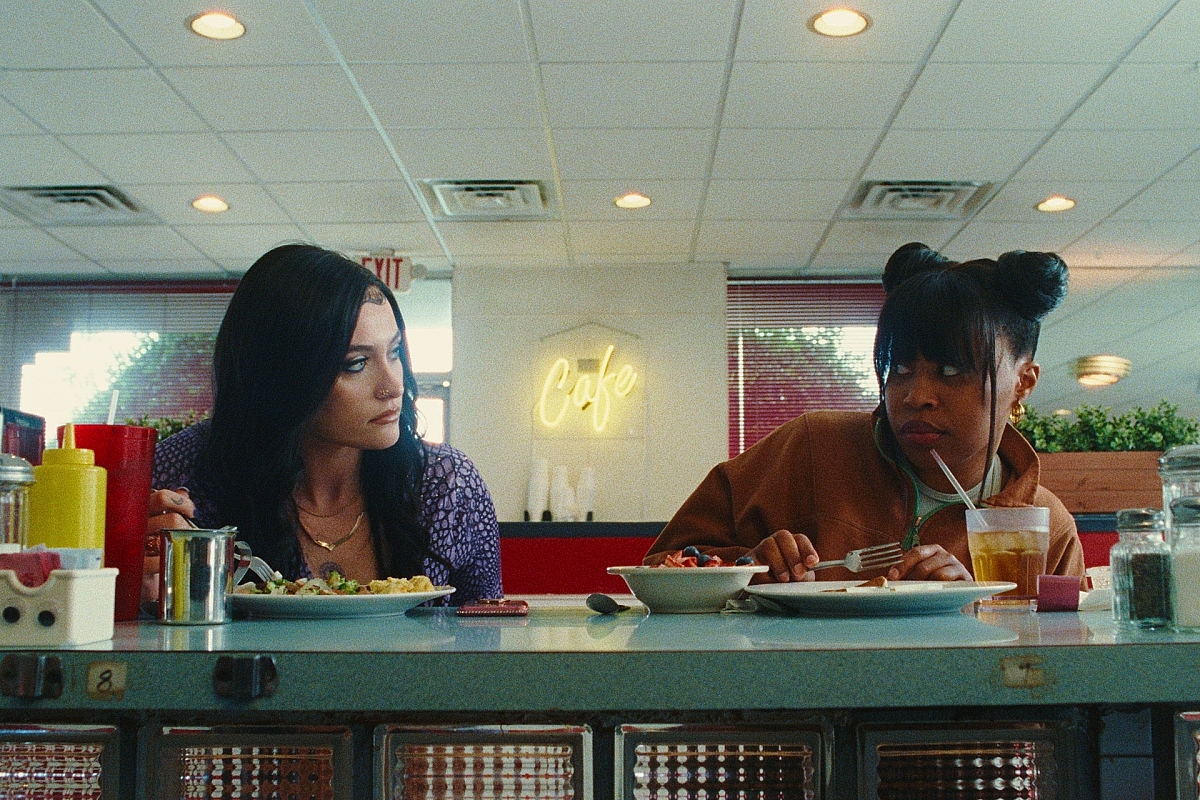
Paris Jackson as Hailey and Dominique Fishback as Dre on the set of SWARM. Photo courtesy of Prime Video.
He also made the decision to frame the narrative in 3:2 (1.5:1) aspect ratio, saying, "It's a boxed-in format that has never been one of the go-to aspect ratios in cinema. I knew I could tilt the camera, play with the horizon line and use the extra head space it gives to bring a sense of awkward imbalance to the portraiture and compositions of our strange and singular character." With all of this in mind, Daniels worked with Keslow Camera in LA to prepare a standard digital camera package and lenses for the shoot. Until a sudden and unexpected 11th-hour turn of events transformed Swarm into an analog affair.
As Daniels explains, "A few days before we were due to leave LA to start production in Atlanta, I did some film versus digital lighting tests, as I was curious to see how both formats handled different lighting setups and what we might be missing by not originating on film.
"I have to say the filmed material looked great…alive with grain, better contrast and punchier colors. It also struck me that shooting this contemporary story – involving smart phones and modern mixed media – on analog film would give it the interesting visual counterpoint of texture and add to the strangeness of the story.
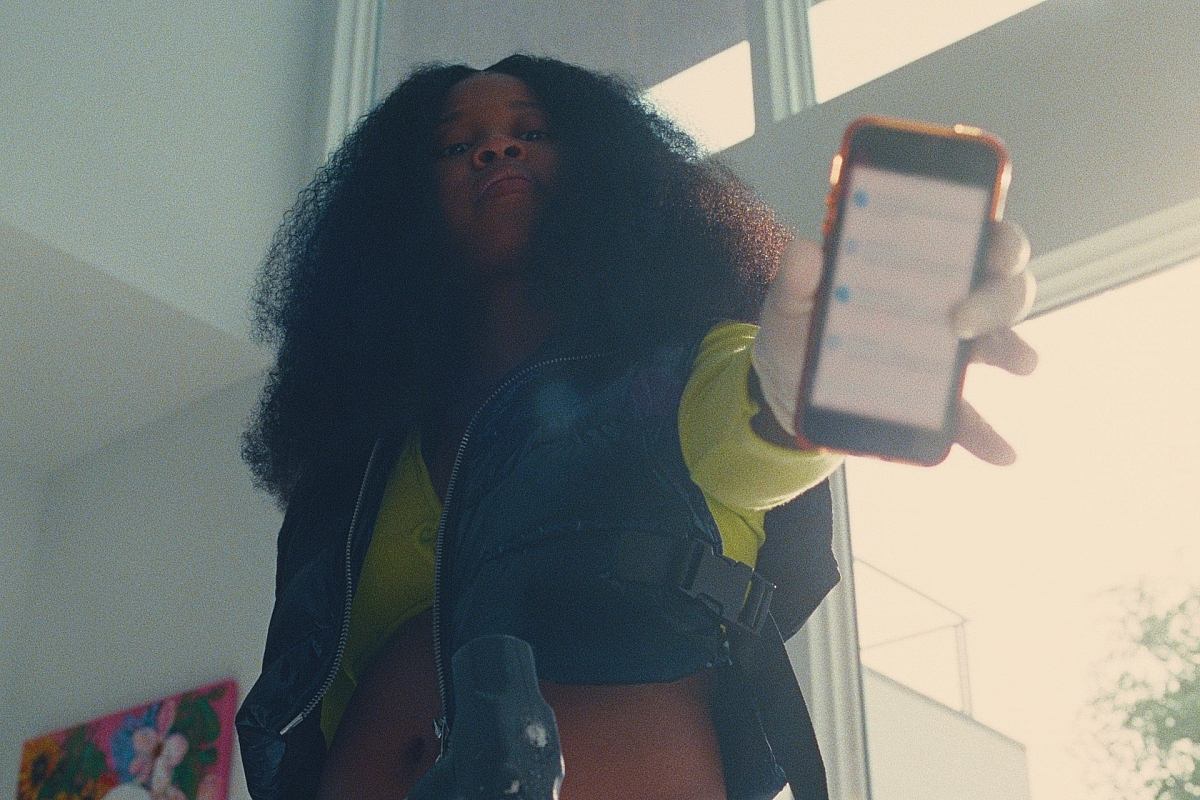
Dominique Fishback as Dre Greene in SWARM. Photo courtesy of Prime Video.
"Donald must have felt the same, as he called me the day after he'd seen the tests to tell me that Swarm would be shot on film. He was absolutely adamant that he would not direct this show unless it was shot on film, and he put a lot on the line.
"So, while it was nuts having just a weekend to swap the camera package from digital to film, to release our DIT and hire a film-loader, I felt it was a great choice. Film would make the production feel bigger, more important and substantial."
With the help of the team at Keslow Camera, Daniels selected an ARRI LT 35mm film camera for the shoot, fitted with Cooke S4 prime lenses and an Optimo Ultra 12x long-range zoom.
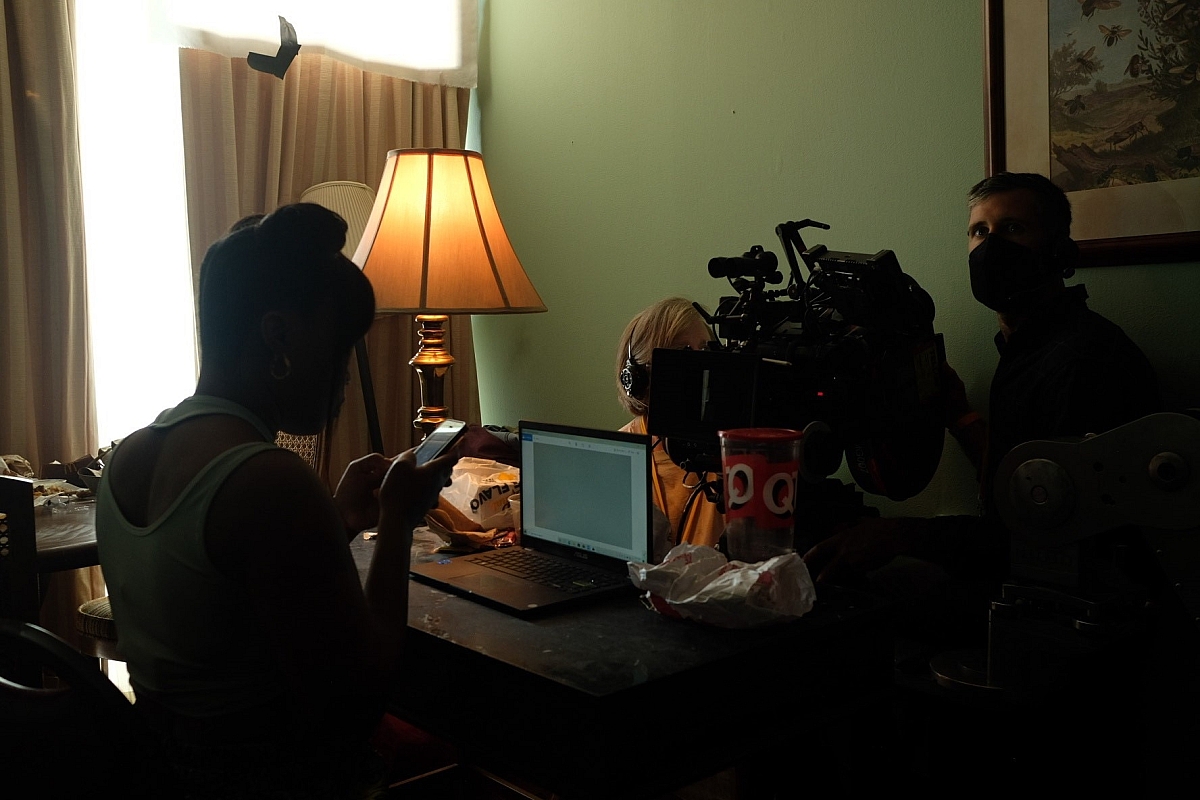
Camera operator Stew Cantrell and AC Teddy Dickerson on set with actress Dominique Fishback. Photo courtesy of Drew Daniels.
"The ARRI LT is a great film camera that can be set up in minutes," he explains. "I'm not so fond of the look of the Cooke S4s with digital cameras, but when you shoot with them on film, they bring a dimensionality in the image, where the subject kind of pops out of the screen a little bit. They also have a star-shaped bokeh, like a stop sign with little jagged edges, that has a more interesting character than big circular bokeh you get when shooting large format. I used a low contrast filter on the lenses to lift the low-end a little and give the highlights a very subtle bloom.
The lenses also helped in other respects. "The Cooke S4 range has a lot of focal lengths, especially in the wider/closer end of the range – 12, 14, 16 18, 21, 25, 27, 35 and 40mm – which gave me artistic choices and practical solutions when squeezing into tight spaces," he notes.
Daniels shot the entire series using just one film stock, KODAK VISION3 500T Color Negative Film 5219, declaring, "I love the way the 500T reacts with color, and I wanted consistent grain and texture across the range of day/night interior and exteriors, to keep things simple and cohesive. From the tests I had done, I decided I was going to push the film by one stop at the lab, while also underexposing interiors on set to make the blacks a little bit milkier and the texture to be a little grainier, which Donald really liked.
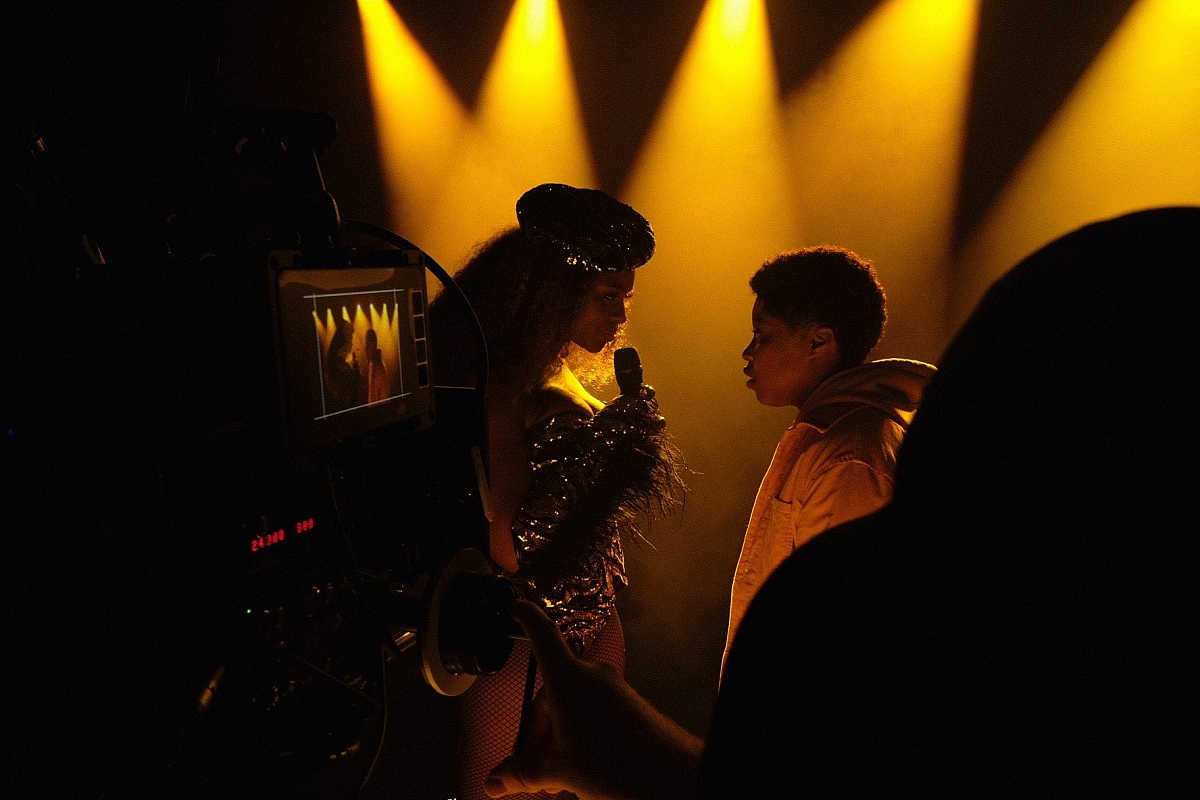
Nirine S. Brown as Ni'Jah and Dominique Fishback as Dre in a performance scene from SWARM. Photo courtesy of Drew Daniels.
"Also, I just love the 500T when it's overexposed, or when it's used in scenarios where you don't know exactly how a fluorescent tube, a practical strip club or LED lamp in a back alley is going to look. The 500T just always surprises me in a really fun way."
The exposed negative was processed and scanned to 4K at FotoKem in Los Angeles before the final grade at the company by colorist Al Arnold.
Swarm is notable for its restrained camera movement, and Daniels explains, "We developed a kind of Dogme manifesto for the shoot, a rigorous style that I was keen to obey. I wanted to make the most of the 3:2 framing, to shoot with low angles and tilt up, rather than boom when someone approached the camera. When we wanted to track a character, we did lateral, left-to-right dollies, rather than pans.
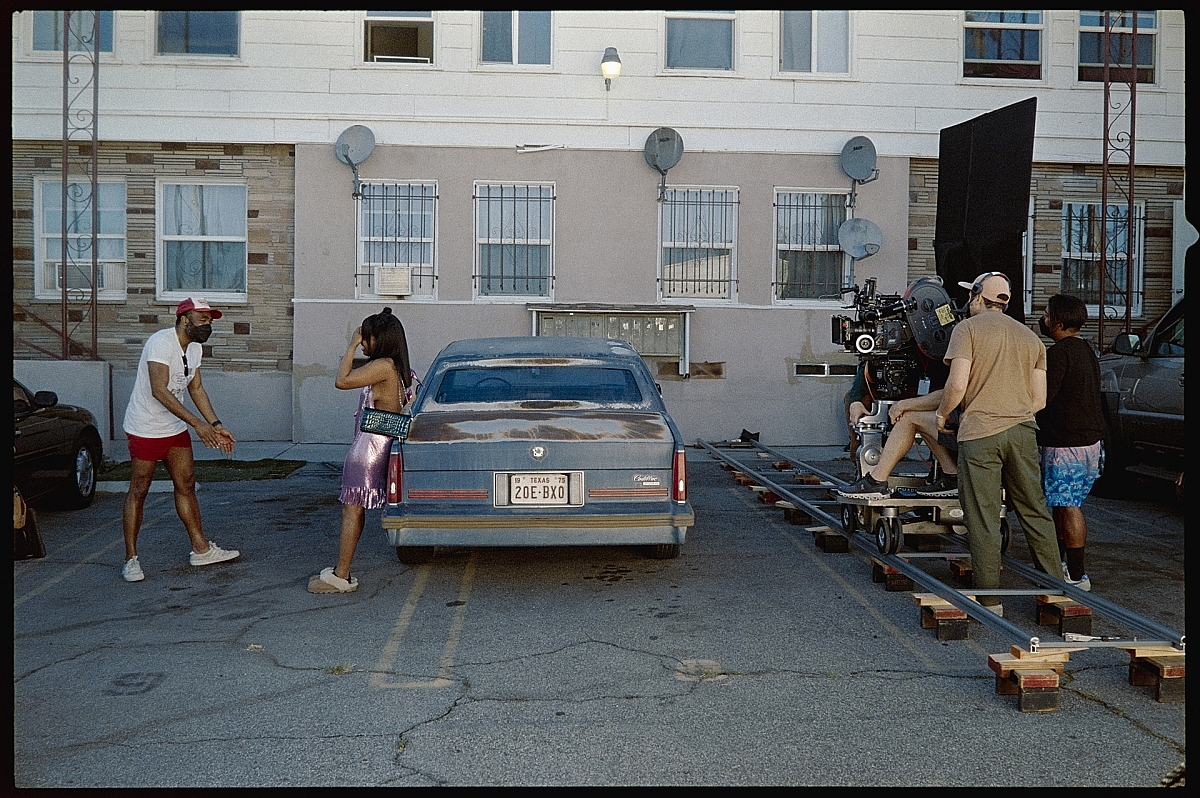
Writer, director and executive producer Donald Glover and actress Dominique Fishback on the set of SWARM. Photo by Warrick Page. Courtesy of Prime Video.
"There was no desire for traditional coverage, especially on the murder scenes, which were all filmed in single takes. And we carefully choreographed those scenes to intentionally deprive the audience of witnessing the actual blows, just the aftermath. We didn't do too many push-ins either, except for a long zoom into Dre's lips as she's telling a big lie in episode five."
The same dogma applied when it came to lighting the production. Daniels steered well-away from hard, lurid or horror styling, preferring authenticity and naturalism to underscore the dramatic performances.
"With LED light these days, you have a world of programmable color and effects at your disposal, but dramatized looks would have been inappropriate and distracting for the audience on this production, and things can easily end up becoming a mess.
"So working with my gaffer, Kazmo Kida, I kept things simple, using HMIs, LED panels, Dedolight lights and their reflectors, plus practicals, to motivate the light from believable sources according to the time of day or night at our interior and exterior locations."
Recapping his overall experience, Daniels says, "It was a great experience to work with Donald, and I'm glad we shot Swarm on analog film. There's something that feels a little bit magical, almost sacred, about shooting on film – the alchemy of a scarce resource. Every camera position, every shot, every take, you ask yourself is this good enough to be captured on film? In this way, film makes you step up a level in everything you do. I think the result is pretty cool."